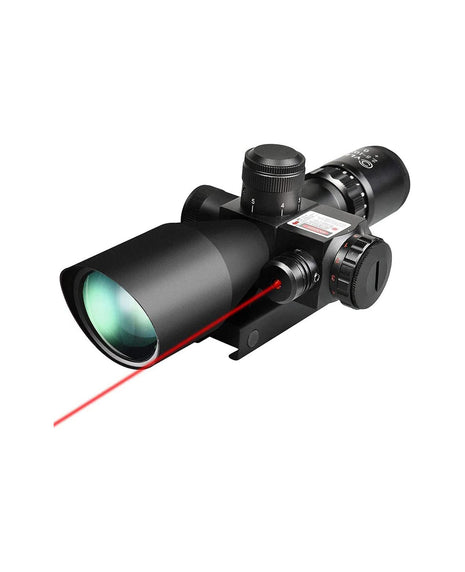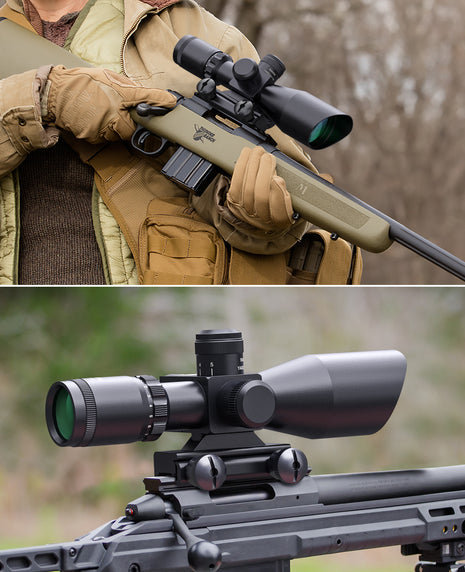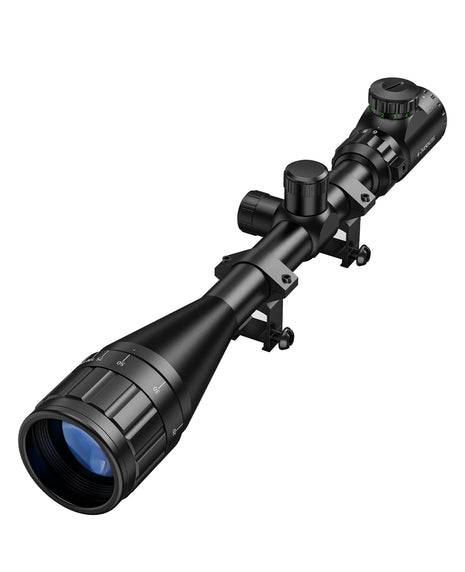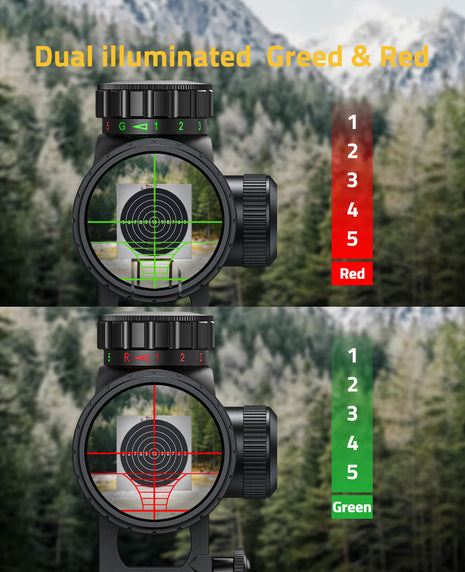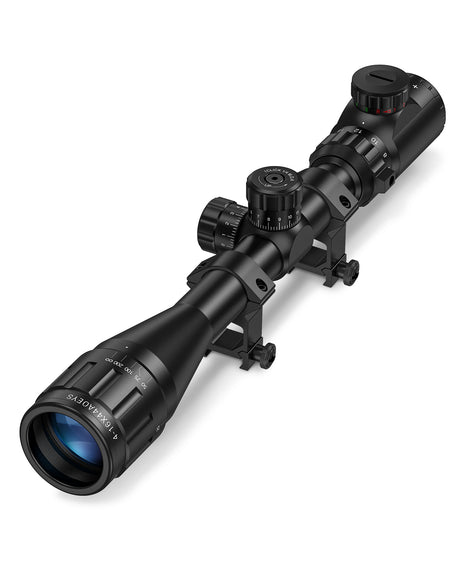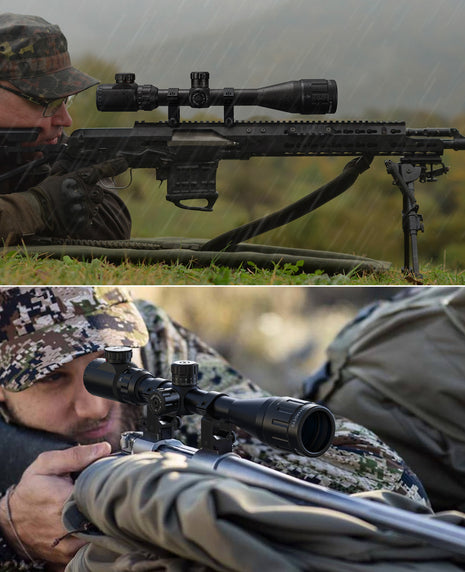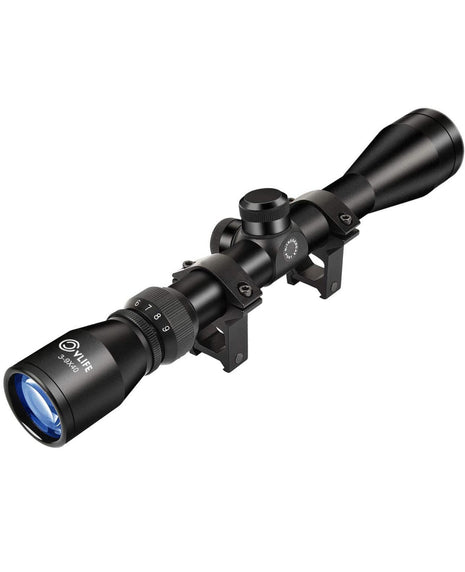Why Is My LPVO Scope Underperforming in Low-Light Conditions?
- 13 min reading time

Understanding Why LPVOs Struggle in Low Light
The performance of any scope in low light is influenced by a variety of interconnected factors, each playing a critical role in determining how effectively the scope gathers and transmits available light to your eye. These factors range from the quality of the optical components used in the scope's construction to the specific techniques employed by the user when operating the scope in challenging environments. By understanding these factors in greater detail, you can pinpoint potential weaknesses in your setup and address them to achieve better low-light performance.
Lens Coating:
High-quality lens coatings are essential for maximizing light transmission in any optical device, including LPVOs. These coatings consist of multiple ultra-thin layers of material applied to the lens surface to reduce the amount of light lost due to reflection. When light enters an uncoated or poorly coated lens, a significant portion of it is scattered or reflected away, resulting in diminished clarity and overall brightness. This loss of light becomes even more problematic in low-light conditions, where every fraction of available light is crucial for target identification and situational awareness.
In contrast, fully multi-coated lenses work to minimize internal reflections and glare, which can otherwise create distracting halos or flares around bright objects, such as a full moon or artificial light sources. By suppressing these visual artifacts, multi-coated lenses provide a sharper, more contrast-rich image. Additionally, the improved light transmission offered by high-quality coatings ensures that colors appear more accurate and true-to-life, further enhancing the viewing experience.
Without these coatings, scopes tend to suffer from several optical issues, including glare that obscures details, reduced image brightness that hampers target visibility, and distortion that makes objects appear blurred or misaligned. For hunters, shooters, and tactical users, these shortcomings can mean the difference between a successful shot and a missed opportunity. High-quality coatings are not just a luxury; they are an essential feature for any scope designed for serious performance, particularly in demanding environments such as dense forests, twilight hours, or urban low-light scenarios.
Objective Lens Diameter:
Larger objective lenses are designed to gather more light, making them particularly advantageous in low-light conditions such as early mornings, late evenings, or dense wooded areas where natural illumination is minimal. The larger the objective lens diameter, the more light it can capture and funnel into the scope, resulting in a brighter, clearer image for the shooter. This increased light transmission not only enhances visibility but also helps improve the contrast and clarity of the target, allowing you to identify finer details even when the surroundings are dim.
On the other hand, scopes with smaller objective lenses may struggle in such scenarios. Their reduced light-gathering capacity can limit brightness, making images appear darker or less defined. This can be especially problematic in hunting or tactical situations where precise identification of the target is crucial. While smaller lenses are generally more compact and lightweight, they might sacrifice some level of performance in low-light environments, which can lead to missed opportunities or increased difficulty in aligning your shot.
Ultimately, the choice of objective lens size should strike a balance between portability and performance. For those who prioritize low-light performance, opting for an objective lens diameter of 24mm or greater can significantly improve your experience and results.
Exit Pupil Size:
Low magnification provides a larger exit pupil, which is the diameter of the beam of light leaving the eyepiece of your scope. The exit pupil is crucial because it determines how much light enters your eye, directly impacting how bright and clear the image appears. In low-light conditions, such as during dusk or dawn, your eye's pupil naturally dilates to gather as much light as possible. A larger exit pupil ensures that the scope delivers enough light to match this dilation, allowing you to see clearly even in dim environments.
However, as you increase the magnification on your scope, the exit pupil shrinks. This is because the exit pupil size is calculated by dividing the objective lens diameter by the magnification. For example, a scope with a 24mm objective lens at 1x magnification will have a generous 24mm exit pupil, but at 8x magnification, the exit pupil shrinks to just 3mm. If the exit pupil becomes smaller than your eye's pupil, you may experience a dim, restricted image, making it harder to track targets in low light. This is why staying at lower magnification settings in dim conditions is often recommended—it maximizes the available light, giving you a brighter, clearer view of your surroundings.
Internal Reflection:
Poor internal tube design or the absence of blackened edges inside a scope can significantly impact its performance, especially in low-light environments. When the interior of the scope is not properly designed to minimize light reflection, incoming light can scatter within the tube instead of traveling directly to the reticle and your eye. This scattering effect creates stray light, which reduces image clarity and sharpness by washing out details and diminishing contrast.
Blackened edges and anti-reflective coatings on the interior surfaces play a critical role in controlling how light behaves within the scope. Without these features, unwanted light can bounce around, creating glare or a "halo" effect that distracts from your target. This is particularly problematic in low-light situations, where every photon counts. Instead of enhancing the limited light available, a poorly designed scope will waste it, leading to a dull, washed-out view with muted colors and reduced depth perception.
Moreover, the lack of internal light management can also lead to issues such as "ghosting," where faint duplicate images or blurry outlines of objects appear in the field of view. This not only hampers your ability to acquire a target quickly but can also cause eye strain over prolonged use. In high-stakes scenarios like hunting or tactical operations, such flaws can mean the difference between success and failure.
High-quality scopes from reputable manufacturers address this issue by carefully engineering the internal tube design and incorporating matte black finishes or precision-coated surfaces inside the optical system. These measures ensure that light travels efficiently through the scope, maintaining brightness, contrast, and overall image fidelity even in challenging lighting conditions. If you're facing contrast issues with your scope, it's worth considering whether the internal construction might be contributing to the problem. Upgrading to a better-designed optic can significantly enhance your shooting experience, especially in low-light environments.
Actionable Solutions to Improve Low-Light Performance
To ensure your LPVO delivers optimal performance in low-light environments, it’s essential to focus on a combination of factors, including proper equipment selection, thoughtful setup, and practical usage techniques. By understanding how your scope interacts with available light and making adjustments to both your gear and shooting habits, you can significantly improve clarity, brightness, and target acquisition in challenging lighting conditions. Whether you’re fine-tuning your optics, upgrading specific components, or learning to adapt your approach to various environments, there are several strategies that can maximize your LPVO’s potential even in the dimmest settings.
Choose Fully Multi-Coated Optics
Investing in a scope with fully multi-coated lenses is one of the most effective ways to enhance your low-light shooting experience. These advanced coatings are designed to minimize light loss by reducing surface reflections and ensuring that more light passes through the lenses to your eyes. This results in significantly improved brightness and clarity, even in challenging conditions like dawn, dusk, or shaded environments. Fully multi-coated optics also help to reduce glare caused by stray light, which can otherwise obscure your target or create distracting reflections. By maximizing light transmission and improving image contrast, scopes with this feature provide you with crisp, detailed visuals, making it easier to spot and accurately engage your target in dimly lit settings. Whether you're hunting in dense woods or shooting at twilight, fully multi-coated lenses ensure you won't miss critical details when it matters most.
Opt for a Larger Objective Lens
An objective lens diameter of 24mm or greater is ideal for LPVOs because larger lenses have the ability to gather more light from the environment. This is crucial for maintaining a clear and bright sight picture, especially during low-light conditions such as early morning or late evening hunts when natural light is scarce. A larger objective lens allows more photons to enter the scope, effectively improving image brightness and contrast. This means you can identify your target with greater clarity and precision, even as the light fades. Furthermore, a larger lens helps minimize the loss of light caused by factors like fog, rain, or low ambient light levels, ensuring that you have a consistent and reliable view of your surroundings in dimly lit conditions. As a result, hunters can benefit from enhanced visibility, making it easier to spot game or track movements during those critical hours when the sun is just rising or setting.
Prioritize a Wide Optical Tube Diameter
Scopes with 30mm or 34mm tubes offer significantly better light transmission compared to the traditional 1-inch tubes, primarily because they provide a larger diameter for light to enter and pass through. This increased tube size allows for more internal space, which results in greater light-gathering capabilities. With more light entering the scope, the image produced is brighter, sharper, and more detailed, especially in low-light conditions like early mornings, late evenings, or when hunting in dense, shaded areas. The wider tube diameter also helps reduce image distortion, which is often a problem in smaller tubes, improving the clarity and overall performance of the scope during critical moments when visibility is at its lowest. This upgrade is particularly beneficial for hunters and shooters who rely on their optics in challenging lighting situations, offering enhanced target identification and improved accuracy.
Maintain Proper Eye Relief
Ensure that the scope is mounted correctly and positioned at the proper eye relief to align the exit pupil with your eye. Misalignment between the scope and your eye can result in vignetting, which occurs when the light entering the scope is blocked or distorted, creating a darkened, ring-like effect around the edges of the sight picture. This can significantly reduce the brightness and clarity of the image, making it harder to see your target, especially in low-light conditions.
Utilize Auxiliary Lighting
When natural light is insufficient, consider using a hunting flashlight or infrared illuminator to enhance target visibility. A high-quality hunting flashlight with adjustable settings can provide just the right amount of light to illuminate your target without blinding or disturbing the surroundings. For even more discretion, an infrared illuminator can be used in conjunction with night vision optics, allowing you to see in complete darkness without alerting wildlife to your presence. Both options can dramatically improve your ability to detect and identify game in low-light conditions, ensuring you maintain stealth while still achieving a clear view of your surroundings.
LPVO Maintenance Tips for Consistent Performance
- To maintain optimal performance and ensure the best clarity when using your LPVO, it's important to regularly clean your lenses with a microfiber cloth. Dust, fingerprints, and other debris can accumulate on the lens surface, which can interfere with light transmission and distort the image quality. Gently wipe the lenses in a circular motion to avoid scratching or damaging the coatings. Avoid using rough materials, as they can leave permanent marks on the lenses. Regular cleaning not only helps improve the visual quality but also prevents any dirt or grime from affecting the overall performance of your scope in various conditions.
- Storing your LPVO in a cool, dry place is essential for maintaining its longevity and performance. Extreme temperatures, whether hot or cold, can cause condensation to form inside the scope, leading to internal fogging that obstructs your view. Additionally, humidity and moisture can damage the lenses or internal components, leading to mold growth or corrosion. By keeping your LPVO in a climate-controlled environment, away from direct sunlight and moisture, you ensure that the optical clarity remains pristine, and the internal mechanisms stay intact. Proper storage not only prevents fogging but also helps preserve the scope's accuracy and durability over time.
- Inspect and tighten the mount rings periodically to ensure they remain securely fastened. Over time, the vibrations from shooting or rough handling can cause the screws to loosen, potentially affecting the alignment of your scope. A loose mount can lead to shifts in zero, causing inconsistent shots. By checking the rings regularly and tightening them as needed, you help maintain optimal alignment and prevent any potential issues with your scope's performance, ensuring accuracy in the field.
FAQs
Q: Can I use a 1-8x LPVO in low-light environments?
A: Yes, but keep the magnification at lower settings (1x or 2x) to maximize the exit pupil size and brightness.
Q: Are larger objective lenses always better?
A: Larger lenses gather more light, but they also add weight and bulk. Consider your hunting style before upgrading.
Q: Is a 34mm tube worth it?
A: Absolutely! A wider optical tube allows for greater light transmission, making it a solid choice for low-light conditions.
Tags
You May Also Like
Blogs & News
-

, by C V How to Use BDC Holdovers for Different Bullet Weights?
-

, by C V Is a 1-6x BDC Scope Better Than a 3-9x for AR-15?
-

, by C V How to Zero an AR-15 Scope with a BDC Reticle
-

, by C V What Makes Motion Awake Red Dot Sights Unique

